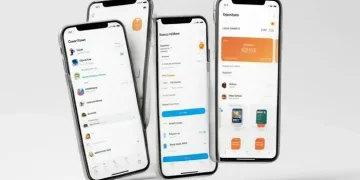Women Infants and Children program (WIC): how it supports families in need

The Women Infants and Children program (WIC) is a lifeline for many families, offering nutrition support and resources. But how does it work, and could it be the help you’ve been looking for?
What is the Women Infants and Children program (WIC)?
The Women Infants and Children program (WIC) is a federally funded nutrition assistance program in the U.S. designed to support low-income pregnant women, new mothers, infants, and children up to age five. It provides healthy food, nutrition education, breastfeeding support, and referrals to healthcare to ensure families have access to essential resources.
How WIC Works
Participants receive monthly benefits in the form of checks, vouchers, or electronic cards to purchase specific nutritious foods like milk, eggs, whole grains, fruits, and vegetables. The program also offers personalized nutrition counseling to help families make healthier choices.
Who Administers WIC?
WIC is managed by state and local agencies, including health departments and nonprofit organizations. Clinics across the country provide services like health screenings, immunization referrals, and dietary guidance.
Since its creation in 1974, WIC has helped millions of families by improving birth outcomes, reducing childhood anemia, and promoting long-term health. Studies show that children enrolled in WIC are more likely to receive preventive medical care and have better diets.
Why WIC Matters
For many families, WIC is a critical safety net that bridges gaps in food security and healthcare access. By focusing on early childhood nutrition, the program lays a foundation for lifelong health and development.
Who qualifies for WIC benefits?
To qualify for WIC benefits, applicants must meet four key requirements: categorical, residential, income, and nutritional risk. Let’s break down each eligibility factor in detail.
Categorical Requirements
WIC serves specific groups: pregnant women, postpartum women (up to 6 months after delivery), breastfeeding mothers (up to 1 year postpartum), infants, and children under 5 years old. Foster children and adopted children in these categories may also qualify.
Income Guidelines
Applicants must have household income at or below 185% of the U.S. Poverty Income Guidelines. Many states allow automatic income eligibility for those enrolled in Medicaid, SNAP, or TANF. Income calculations consider gross earnings before taxes.
Residential Status
Participants must live in the state where they apply. Unlike some assistance programs, WIC doesn’t require U.S. citizenship – legal residents and undocumented immigrants may qualify if they meet other requirements.
Nutritional Risk Assessment
A health professional must identify at least one medical or dietary-based nutritional risk, which could include anemia, underweight status, poor pregnancy outcomes, or inadequate dietary patterns. This assessment typically occurs during the WIC clinic appointment.
Special circumstances like homelessness or participation in Head Start don’t automatically qualify applicants but may help demonstrate need during the application process.
How to apply for WIC: step-by-step guide
Applying for WIC benefits is a straightforward process when you know what to expect. Follow these steps to complete your application successfully.
Step 1: Find Your Local WIC Office
Use the WIC clinic locator on your state’s health department website or call 1-800-342-3556. Many states now offer online pre-screening tools to check eligibility before visiting an office.
Step 2: Schedule an Appointment
Contact your local clinic to book a certification appointment. Wait times vary, but many offices offer same-day or next-day appointments for pregnant applicants. Some locations now provide virtual appointments for initial screenings.
Step 3: Gather Required Documents
Bring these items to your appointment:
- Proof of identity (driver’s license, birth certificate)
- Proof of residence (utility bill, lease agreement)
- Income verification (pay stubs, tax returns, benefit letters)
- Medical referrals if available (for nutritional risk assessment)
Step 4: Attend Your Appointment
Expect to spend 1-2 hours completing:
- Height/weight measurements
- Blood iron test (for women and children over 1 year)
- Nutritional assessment with a counselor
- Program orientation
Step 5: Receive Benefits
If approved, you’ll get:
- WIC EBT card or paper checks (varies by state)
- Food package tailored to your needs
- Next appointment date (typically every 3 months)
Benefits usually start immediately after approval.
Remember to ask about breastfeeding support if applicable and farmer’s market vouchers available in summer months.
Nutritional benefits of WIC for mothers and children
The WIC program provides scientifically-designed nutritional support that makes a real difference for mothers and children. Here’s how these benefits promote health at critical life stages.
For Pregnant Women
WIC foods help prevent iron-deficiency anemia and support fetal development with:
- Iron-fortified cereals
- Protein-rich eggs and legumes
- Calcium-packed milk or alternatives
- Vitamin C-rich fruits and vegetables to enhance iron absorption
For Breastfeeding Mothers
The program offers enhanced food packages with additional portions of:
- Whole grains for energy
- Canned fish for omega-3s
- Cheese and yogurt for calcium needs
- Extra fruits and vegetables
Plus lactation counseling from certified specialists.
For Infants
WIC provides:
- Iron-fortified infant formula (if not breastfeeding)
- Baby cereals at 6 months
- Vitamin-rich puréed fruits/vegetables
- Education on introducing solid foods
Studies show WIC infants have better growth patterns than eligible non-participants.
For Children (1-5 years)
The program combats childhood obesity and deficiencies by:
- Promoting whole grains over refined
- Limiting juice portions
- Encouraging diverse vegetable intake
- Providing nutrition education for caregivers
WIC children show improved diet quality and lower rates of food insecurity.
The program’s tailored approach addresses nutritional gaps at each developmental stage through both food provisions and education.
WIC-approved foods: what you can buy

The WIC food package includes carefully selected, nutrient-dense foods that meet specific nutritional guidelines. Here’s a comprehensive breakdown of what participants can purchase with their benefits.
Core Food Categories
All WIC participants receive:
- Whole grains: Brown rice, whole wheat bread, tortillas, oatmeal
- Fruits and vegetables: Fresh, frozen (no added sugars), or canned (in juice or water)
- Milk: Low-fat (1%) or fat-free milk, or lactose-free alternatives
- Eggs: Dozen large eggs (vegetarian alternatives available in some states)
Specialty Items by Participant Type
For women and children:
- Iron-fortified breakfast cereals
- 100% fruit juice (limited quantities)
- Dried or canned beans/peas
- Peanut butter
For infants:
- Iron-fortified infant formula (if not breastfeeding)
- Infant cereal after 6 months
- Baby food fruits/vegetables after 6 months
For breastfeeding mothers:
- Additional cheese and yogurt
- Canned fish (light tuna or salmon)
- Increased whole grain options
What WIC Doesn’t Cover
Benefits cannot be used for:
- Prepared or hot foods
- Organic versions (unless same price as conventional)
- Brands not on approved lists
- Non-food items
- Supplements or vitamins
Many states now offer farmers’ market vouchers during summer months for fresh produce.
WIC foods are selected based on the latest nutrition science to address common deficiencies while promoting long-term healthy eating habits.
How WIC supports breastfeeding mothers
The WIC program provides exceptional support for breastfeeding mothers through specialized services and enhanced benefits designed to promote successful breastfeeding journeys.
Enhanced Food Packages
Breastfeeding participants receive:
- Larger quantities of healthy foods including fruits, vegetables, and whole grains
- Additional protein sources like canned fish and legumes
- Extra dairy options including cheese and yogurt
These packages provide about 30% more food than standard packages to meet increased nutritional needs.
Professional Lactation Support
WIC offers:
- Certified lactation consultants at most clinics
- Breastfeeding peer counselors with lived experience
- 24/7 breastfeeding helplines in many states
- Prenatal breastfeeding education classes
Special Equipment Access
Many WIC clinics provide:
- Breast pumps (manual and electric)
- Nursing bras and pads
- Supplemental nursing systems for low milk supply
Some states offer hospital-grade pumps for mothers with premature infants.
Postpartum Support
Benefits continue for:
- Up to 1 year postpartum for fully breastfeeding mothers
- 6 months postpartum for partially breastfeeding mothers
WIC also provides transition support when introducing solids while maintaining breastfeeding.
Studies show WIC participants breastfeed longer than eligible non-participants, with particularly strong outcomes for vulnerable populations.
WIC clinics: locations and services
WIC clinics serve as accessible community hubs offering comprehensive services beyond just food benefits. Here’s what participants can expect at these locations.
Finding WIC Clinics
WIC services are available through:
- County health departments in most areas
- Community health centers and hospitals
- Mobile clinics in rural/underserved areas
- Some schools and Head Start programs
Most states offer online clinic locators with maps and hours.
Core Clinic Services
All WIC locations provide:
- Nutrition assessments and counseling
- Health screenings (height/weight, iron tests)
- Breastfeeding support and supplies
- Immunization referrals
- Benefit issuance (EBT cards or vouchers)
Specialized Services
Many clinics also offer:
- Registered dietitian consultations
- Cooking demonstrations using WIC foods
- Farmer’s market nutrition programs
- Smoking cessation programs
- Referrals to other social services
Clinic Experience
Appointments typically:
- Last 30-90 minutes
- Include private consultations
- Offer multilingual services
- Provide child-friendly spaces
Many clinics now offer evening/weekend hours and telehealth options for some services.
WIC clinics serve as one-stop resources for family health and nutrition needs in welcoming, non-judgmental environments.
Common myths about WIC debunked
Many misconceptions surround the WIC program, preventing eligible families from accessing vital nutrition assistance. Let’s separate fact from fiction regarding common WIC myths.
Myth 1: WIC is Only for Unemployed Families
Reality: Many working families qualify. The income limit (185% of poverty level) means a family of four earning about $55,500/year may still be eligible. Those receiving Medicaid, SNAP or TANF often automatically qualify.
Myth 2: WIC Benefits Last Forever
Reality: Benefits are temporary. Pregnant women can receive WIC through pregnancy and up to 6 months postpartum (1 year if breastfeeding). Children can participate until their 5th birthday, with re-certification every 6-12 months.
Myth 3: WIC Only Provides Formula
Reality: While formula is available, WIC strongly promotes breastfeeding with extensive support. The food package includes fruits, vegetables, whole grains, dairy, eggs, and for breastfeeding moms, additional foods like canned fish.
Myth 4: The Application Process is Complicated
Reality: Applying takes about 1-2 hours for the initial appointment. Many states now offer online applications and virtual appointments. Required documents are standard (ID, proof of address, income verification).
Myth 5: WIC Stigmatizes Participants
Reality: Modern WIC uses discreet EBT cards (no paper vouchers). Clinics provide respectful, professional service. Over 6 million Americans participate monthly – it’s a common, normal support system.
Understanding these facts helps families make informed decisions about accessing nutrition assistance they’ve earned through tax contributions.
Success stories: families helped by WIC
The WIC program has transformed millions of lives across America. These real success stories demonstrate its powerful impact on families from all backgrounds.
Maria’s Story: From Food Insecurity to Nursing School
As a single mother in Texas, Maria struggled to afford nutritious food during pregnancy. WIC provided:
- Essential prenatal nutrition
- Breastfeeding support when her daughter was born
- Nutrition education that inspired her nursing career
Today, Maria is a pediatric nurse helping other WIC families.
The Johnson Family: Breaking the Cycle
With three children under 5, the Johnsons faced constant food shortages. WIC helped by:
- Providing consistent, healthy groceries
- Teaching budget-friendly meal planning
- Connecting them with job training programs
Their children now maintain healthy weights and excel in school.
Amal’s Journey: Refugee to Community Health Worker
Newly arrived from Syria, Amal found support through WIC’s:
- Multilingual services
- Cultural food options
- Community connections
She now works as a WIC peer counselor helping other refugee families.
Quantifiable Success
Studies show WIC participants:
- Have healthier birth outcomes
- Experience lower food insecurity
- Show better child development
- Make wiser food choices even after leaving the program
These stories represent just a fraction of WIC’s life-changing impact across generations.
WIC vs. SNAP: key differences

While both WIC and SNAP (Supplemental Nutrition Assistance Program) provide food assistance, they serve different purposes and populations. Understanding these differences helps families access the right benefits.
Eligibility Requirements
WIC:
- Serves specific groups (pregnant/postpartum women, infants, children under 5)
- Requires nutritional risk assessment
- Income limit: 185% of poverty level
SNAP:
- Open to all low-income individuals/families
- No nutritional requirements
- Income limit varies by state (130-200% of poverty level)
Benefit Structure
WIC:
- Provides specific nutrient-rich foods
- Includes nutrition education and counseling
- Offers breastfeeding support and referrals
SNAP:
- Monthly monetary benefit for any food items
- No nutrition education requirement
- Can be used for seeds/plants to grow food
Program Focus
WIC:
- Preventive health program
- Targets critical growth periods
- Promotes specific dietary patterns
SNAP:
- General food assistance
- Addresses immediate hunger needs
- Broader food choices
Participation Details
Key differences:
- WIC benefits average $50-$75 monthly per person
- SNAP benefits average $130-$250 monthly per person
- Many families qualify for both programs
- WIC has time limits, SNAP can be long-term
Both programs use EBT cards in most states, but WIC cards only work for approved items.
Tips for maximizing your WIC benefits
Getting the most from your WIC benefits requires smart planning and knowledge of program features. These practical tips help families stretch their nutritional dollars further.
Smart Shopping Strategies
- Compare brands – WIC covers store brands and often name brands if priced similarly
- Buy in-season produce – More quantity for your fruit/vegetable benefits
- Use benefits early – Avoid last-minute rushes when items may be out of stock
- Check expiration dates – Particularly important for milk and eggs
Meal Planning Techniques
- Combine WIC foods – Make complete meals like vegetable omelets or bean/cheese burritos
- Freeze extras – Bread, cheese and some fruits freeze well for later use
- Prep ahead – Wash and chop vegetables when you get home for easy snacks
- Use all components – Don’t let any benefit go unused each month
Program Features to Utilize
- Farmer’s Market Nutrition Program – Summer vouchers for fresh local produce
- Nutrition classes – Often include free recipe books and samples
- Breastfeeding support – Can qualify you for enhanced food package
- Online tools – Many states offer WIC shopping apps
Common Mistakes to Avoid
- Letting benefits expire
- Not bringing your WIC ID to the store
- Buying wrong sizes or types of approved foods
- Missing recertification appointments
With proper planning, WIC benefits can provide high-quality nutrition throughout the month.
Future of WIC: upcoming changes and improvements
The WIC program is evolving to better serve families, with several important changes coming in the near future. These updates aim to improve accessibility, nutrition quality, and user experience.
Enhanced Food Packages
Upcoming revisions to WIC food packages include:
- More flexibility in fruit and vegetable quantities
- Expanded whole grain options like quinoa and whole wheat pasta
- Reduced juice allowances to align with dietary guidelines
- Increased cultural food options for diverse populations
Technology Improvements
WIC is modernizing through:
- Nationwide WIC EBT rollout to replace paper vouchers
- Mobile app development for benefit management
- Online nutrition education modules
- Improved data systems for easier enrollment
Program Expansion
Future initiatives include:
- Extended postpartum eligibility from 6 months to 1 year
- Pilot programs for children up to age 6
- Increased breastfeeding incentives
- Enhanced farmer’s market programs
Research and Evaluation
Ongoing studies focus on:
- Long-term health outcomes of WIC participants
- Impact of proposed changes on participation rates
- New nutritional risk indicators
- Effectiveness of telehealth services
These changes represent WIC’s commitment to evidence-based improvements that meet families’ evolving needs.
The Vital Role of WIC in Building Healthier Futures
The Women, Infants, and Children program has proven to be one of America’s most successful nutrition initiatives, supporting generations of families during critical life stages.
From pregnancy through early childhood, WIC provides more than just food – it offers education, healthcare connections, and community support that create lasting benefits. The program’s upcoming improvements promise to make these services even more accessible and effective.
Whether you’re considering applying for WIC or simply learning about its impact, remember that this program represents an investment in our nation’s health. By supporting proper nutrition during the earliest years, WIC helps children grow, mothers thrive, and families build brighter futures.
If you or someone you know might benefit from WIC, don’t hesitate to explore this valuable resource – it could make all the difference.






